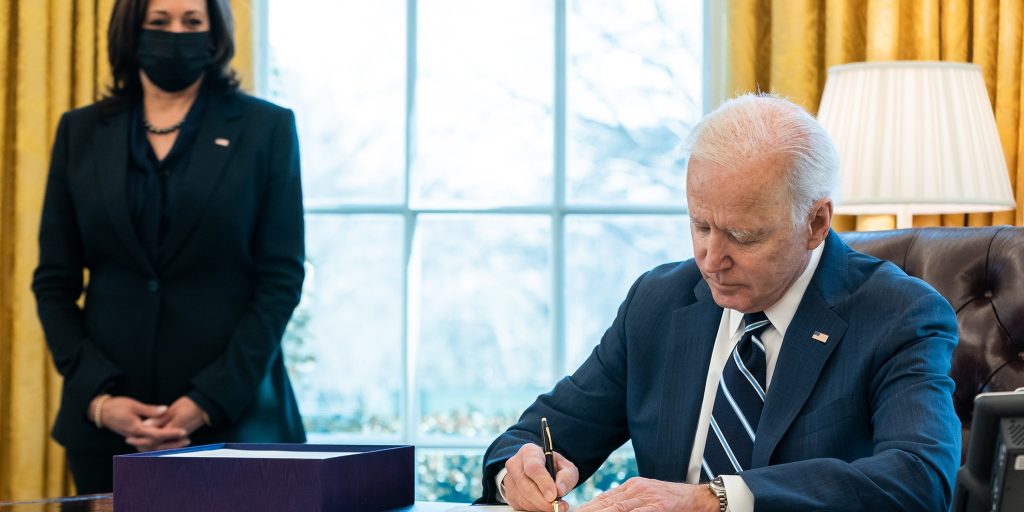One year on, public officials laud success of the American Rescue Plan (ARPA)
With businesses shuttered and economic uncertainty dominating discourse over the last few years, the fiscal toll over the last year felt by everyday people has been severe—with the blow lessened by national initiatives like the American Rescue Plan (ARPA), which was enacted exactly a year ago Friday. Federal support through initiatives ARPA and the CARES Act have done much to stabilize communities amid the pandemic’s unprecedented challenges.
It’s allowed governments to make investments in necessities like broadband infrastructure—which became a primary need for constituents with the rise in popularity of hybrid and full-time telework when everything shifted online at the pandemic’s onset—completing overdo wastewater projects and responding to staffing challenges.
“We stood to lose or lay off nearly 2,000 employees if it were not for CARES funding and then the ARPA funding,” said Sylvester Turner, mayor of Houston, in an interview published by the U.S. Conference of Mayors. Without the aid, Turner said Houston would have been forced to “lay off municipal workers: I’m talking about the people who pick up the trash, I’m talking about the people who attend to our wastewater infrastructure system, I’m talking about people in our parks department, library department, I’m talking about firefighters, and I’m talking about police officers.”
The city’s ARPA allotment was used to plug a $200 million budgetary shortfall, according to Turner.
Cities across the country have used their ARPA funding allotments for a variety of purposes. According to National League of Cities’ COVID-19 Local Action Tracker, which documents response measures cities, towns and villages have taken to mitigate the pandemic’s impact. In an update to the tracker, National League of Cities (NLC) noted there’ve been “nearly 5,000 actions taken in 800 cities” so far, notes a press statement about the update. Of those, 672 are directly related to ARPA.
Elsewhere in Colton, Calif., the city council there approved $2.8 million in hazard pay payments for essential workers. In New Haven, Conn., city leaders approved $12 million of its $115 million portion to install “500 new video surveillance cameras, expand the ShotSpotter electronic gunshot warning system,” among other things.
Mayor Jim Hovland of Edina, Minn., said in an interview published by the U.S. Conference of Mayors that his community used federal funding to expand the community’s connectivity.
“We thought we had great broadband coverage in our community, but we found out there were blind spots,” Hovland said. City officials dedicated $500,000 of a total $2.4 million federal allotment so residents, especially school-aged children, would “have the kind of access to the internet we wanted them to have. And I think we were the first city in the state to do something like that.”
Notably, the NLC report estimates that 13.9 percent of households are currently without internet access.
For counties, besides creating investment opportunities in infrastructure, American Rescue Plan funding has supported a comprehensive pandemic response, said Larry Johnson, president of the National Association of Counties (NACo). It’s supported “frontline heroes— first responders, medical professionals and others working around the clock to keep our residents safe.”
A key feature of ARPA that’s so far driven its success is its flexibility. Municipalities are able to direct the funding into a variety of areas at their discretion, meeting locality-specific needs.
Beyond the immediate impact, ARPA’s flexibility “allows us to make transformational investments in our communities. We simply would not be positioned to make these investments without the American Rescue Plan,” Johnson said. The framework allows county and city leaders the ability “to invest in struggling small businesses, nonprofits, infrastructure, including broadband, public health and safety and human services, especially for those suffering from domestic violence, mental illnesses and substance use disorders.”
In this, the NLC’s COVID-19 Local Action Tracker highlights five areas that communities have focused on so far: public health initiatives to prevent the spread of COVID-19; to stabilize budgets; invest in infrastructure improvements; to keep people housed; and to support local entrepreneurs and bolster struggling businesses.
The app was created in collaboration with Bloomberg Philanthropies and helps track “how funds such as the CARES Act and the American Rescue Plan Act (ARPA) have been allocated both to address the public health crisis immediately and implement long-term projects in communities.” The app works by consolidating local documents created by governments into one digital space. To view the tracker and download its underlying data, visit NLC’s website.




















